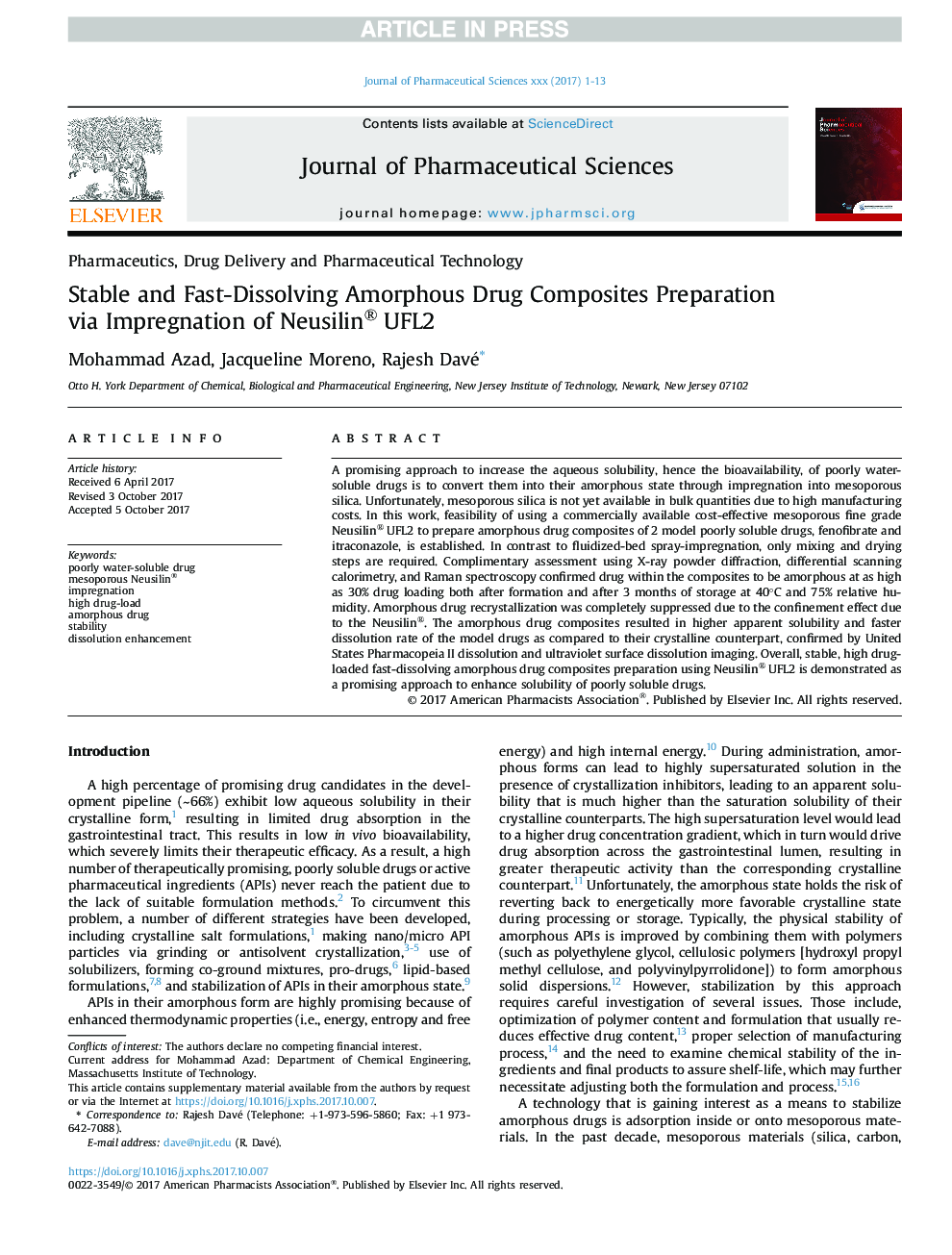| Article ID | Journal | Published Year | Pages | File Type |
|---|---|---|---|---|
| 8513579 | Journal of Pharmaceutical Sciences | 2018 | 13 Pages |
Abstract
A promising approach to increase the aqueous solubility, hence the bioavailability, of poorly water-soluble drugs is to convert them into their amorphous state through impregnation into mesoporous silica. Unfortunately, mesoporous silica is not yet available in bulk quantities due to high manufacturing costs. In this work, feasibility of using a commercially available cost-effective mesoporous fine grade Neusilin® UFL2 to prepare amorphous drug composites of 2 model poorly soluble drugs, fenofibrate and itraconazole, is established. In contrast to fluidized-bed spray-impregnation, only mixing and drying steps are required. Complimentary assessment using X-ray powder diffraction, differential scanning calorimetry, and Raman spectroscopy confirmed drug within the composites to be amorphous at as high as 30% drug loading both after formation and after 3 months of storage at 40°C and 75% relative humidity. Amorphous drug recrystallization was completely suppressed due to the confinement effect due to the Neusilin®. The amorphous drug composites resulted in higher apparent solubility and faster dissolution rate of the model drugs as compared to their crystalline counterpart, confirmed by United States Pharmacopeia II dissolution and ultraviolet surface dissolution imaging. Overall, stable, high drug-loaded fast-dissolving amorphous drug composites preparation using Neusilin® UFL2 is demonstrated as a promising approach to enhance solubility of poorly soluble drugs.
Related Topics
Health Sciences
Pharmacology, Toxicology and Pharmaceutical Science
Drug Discovery
Authors
Mohammad Azad, Jacqueline Moreno, Rajesh Davé,
